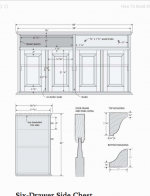Bugsysiegals
Member
- Joined
- Mar 19, 2016
- Messages
- 908
Most reviews I've read seem to indicate Whiteside is the preferred router bit manufacturer; however, their Shaker Style bit is non-adjustable. I've found fairly good reviews on Freud's bit which is adjustable ... is this a good choice or do you have something better to recommend?
Freud Shaker Bit
Are Whiteside Edge Beading Bits any good? Is there a common size to get?
Whiteside Edge Beading Bit
Freud Shaker Bit
Are Whiteside Edge Beading Bits any good? Is there a common size to get?
Whiteside Edge Beading Bit


